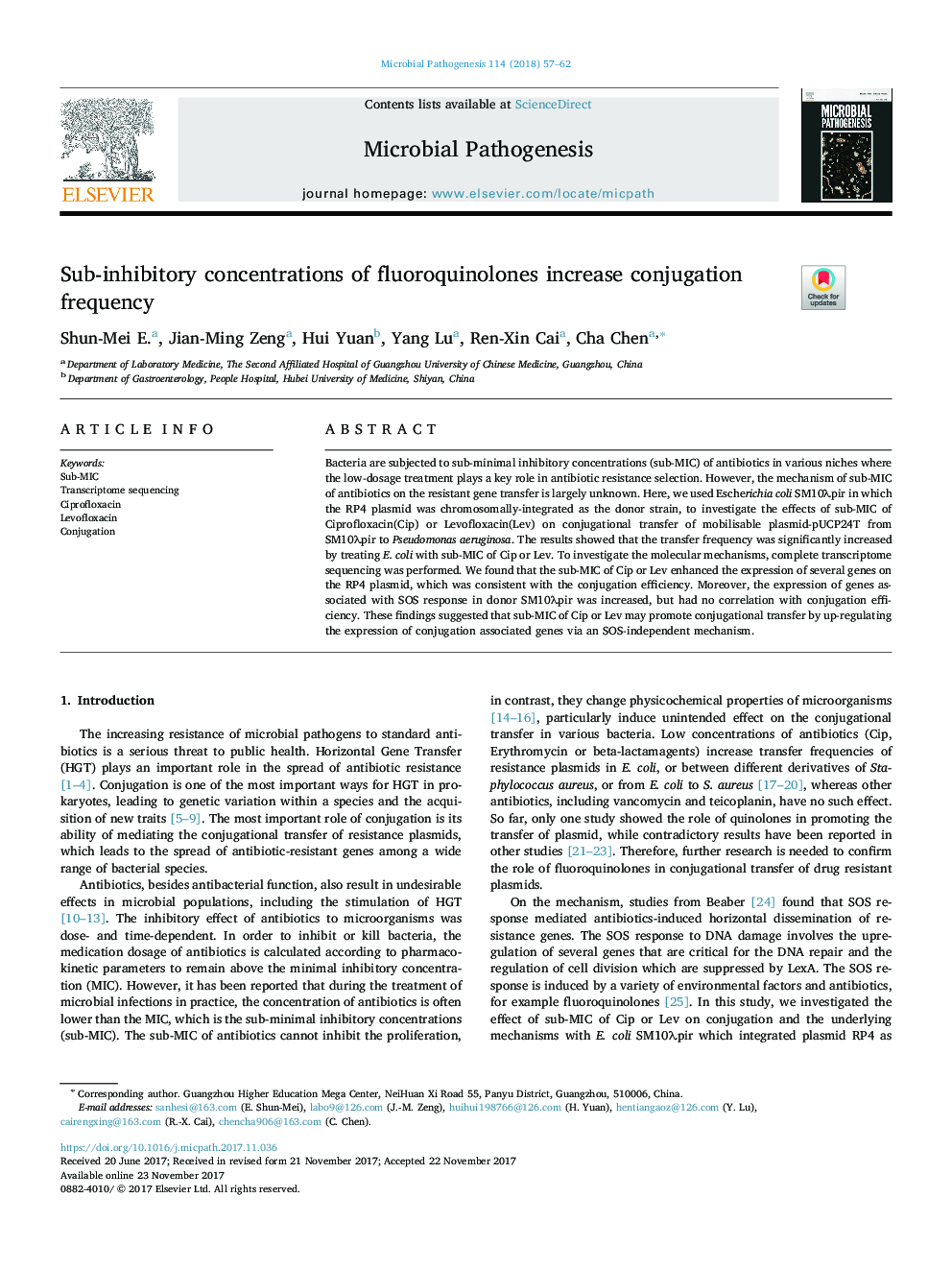| Article ID | Journal | Published Year | Pages | File Type |
|---|---|---|---|---|
| 8749849 | Microbial Pathogenesis | 2018 | 6 Pages |
Abstract
Bacteria are subjected to sub-minimal inhibitory concentrations (sub-MIC) of antibiotics in various niches where the low-dosage treatment plays a key role in antibiotic resistance selection. However, the mechanism of sub-MIC of antibiotics on the resistant gene transfer is largely unknown. Here, we used Escherichia coli SM10λpir in which the RP4 plasmid was chromosomally-integrated as the donor strain, to investigate the effects of sub-MIC of Ciprofloxacin(Cip) or Levofloxacin(Lev) on conjugational transfer of mobilisable plasmid-pUCP24T from SM10λpir to Pseudomonas aeruginosa. The results showed that the transfer frequency was significantly increased by treating E. coli with sub-MIC of Cip or Lev. To investigate the molecular mechanisms, complete transcriptome sequencing was performed. We found that the sub-MIC of Cip or Lev enhanced the expression of several genes on the RP4 plasmid, which was consistent with the conjugation efficiency. Moreover, the expression of genes associated with SOS response in donor SM10λpir was increased, but had no correlation with conjugation efficiency. These findings suggested that sub-MIC of Cip or Lev may promote conjugational transfer by up-regulating the expression of conjugation associated genes via an SOS-independent mechanism.
Related Topics
Life Sciences
Immunology and Microbiology
Microbiology
Authors
Shun-Mei E., Jian-Ming Zeng, Hui Yuan, Yang Lu, Ren-Xin Cai, Cha Chen,
